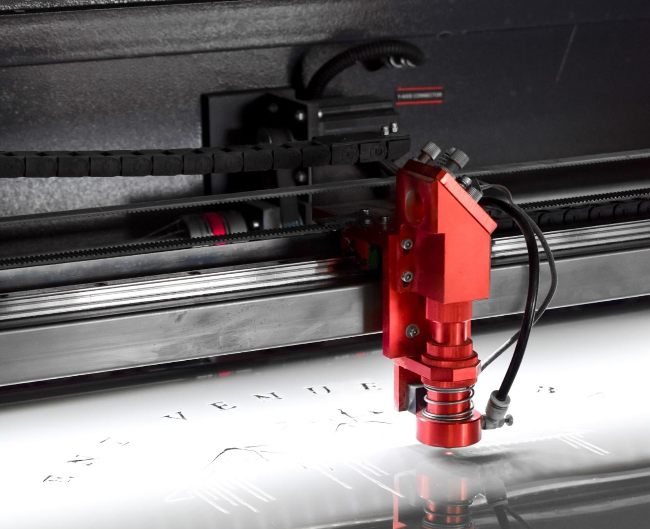Laser etching and laser engraving create high-quality and permanent markings that add distinction to a product or part. Etching and engravings have increased in popularity as industrial and government regulations are very strict regarding clearly legible product and part identification.
These processes are used by many industries, including the automotive and medical industry for part identification and traceability, as well as to personalise items such as signs, memorial plaques, and corporate branding.
How Do You Choose Between Etching or Engraving?
The difference between laser engraving and laser etching is mainly to do with the marking process. For example, the engraving depth and how it changes the overall appearance of the surface of the material.
Laser etching and engraving both remove a portion of the surface material as they mark, however, the difference between them is the depth to which the laser penetrates the surface of the material. Laser etching is a chemical marking process while engraving is a cutting process. Etching uses chemicals to mark the material, while engraving physically cuts into the metal, leaving a deep indentation.
The nature of the job will determine which process is the best choice, as each has its own applications and attributes.
Laser Etching
Laser etching:
- melts the surface of the material using the high heat of a laser beam.
- creates a raised mark as the melted material expands
- usually 0.001” or less of the surface of the material
- alters the reflectivity and enhances contrast
- can be performed on bare, plated, or anodized metal surfaces, polymers, and ceramics
Etching is more suitable for thin materials and small projects such as jewellery, as it is extremely precise, provides durability, and is cost-effective.
Laser Engraving
Laser engraving:
- is the fastest way to mark with a laser and vaporizes the surface of the material using the high heat of a laser
- creates indentations in the surface that can be seen and felt
- depth is usually 0.020″ in metals but can go as deep as 0.125″ in materials such as graphite
- is a good option for parts or materials that need to be hard-wearing
- can be performed on almost any kind of metal, plastic, wood, leather and glass surface.
- is most commonly chosen by people who want to personalise or customise an item, such as desk or door plaques and house number signs.
Furnells has over forty years experience in specialist engraving and can engrave almost any material, including glass, crystal, gold, silver, non-precious metals and wood.
Which Industries Use Laser Etching And Laser Engraving?
All types of manufacturing must adhere to laws and regulations put in place regarding identification to reduce error and ensure part safety.
Lasers are used in almost every industry, including:
- automotive
- industrial and tooling
- electronics
- medical
- aerospace
There are many ways to mark materials however, laser etching and engraving are excellent at providing quality and environmentally friendly markings.
Aside from manufacturing, engraving can also transform a gift to make it much more personal.
At Furnells, we pride ourselves on each and every customised piece. Get in touch to discuss your special item and requirements with us.

